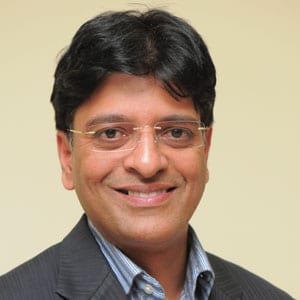 With the launch of Oracle 12c, Oracle has introduced the first database designed for the cloud. The Oracle Database 12c brings to customers a new multi-tenant architecture, by which the company attempts to simplify the process of consolidating databases onto the cloud and enable customers to manage many databases as one – without having to change their applications. Oracle has also announced new database-to-storage system capabilities for customers using Oracle Database 12c with Oracle’s Sun ZFS Storage Appliance and Pillar Axiom storage systems. The new capabilities enable Oracle database users to optimise database performance, streamline storage configuration and provisioning, and create new development and test environments. Diksha P Gupta from Open Source For You spoke to Sheshagiri Anegondi, VP, Technology Business at Oracle India, about the new database and how it will help in addressing the issues faced by IT admins. Read on…
With the launch of Oracle 12c, Oracle has introduced the first database designed for the cloud. The Oracle Database 12c brings to customers a new multi-tenant architecture, by which the company attempts to simplify the process of consolidating databases onto the cloud and enable customers to manage many databases as one – without having to change their applications. Oracle has also announced new database-to-storage system capabilities for customers using Oracle Database 12c with Oracle’s Sun ZFS Storage Appliance and Pillar Axiom storage systems. The new capabilities enable Oracle database users to optimise database performance, streamline storage configuration and provisioning, and create new development and test environments. Diksha P Gupta from Open Source For You spoke to Sheshagiri Anegondi, VP, Technology Business at Oracle India, about the new database and how it will help in addressing the issues faced by IT admins. Read on…
Q: What is Oracle 12c database all about?
Oracle Database 12c has been designed to meet the needs of the cloud-based environment, providing a new multi-tenant architecture on top of a fast, scalable, reliable, and secure database platform. It has 500 additional features, and can greatly benefit customers deploying private database clouds as well as Software-as-a-Service (SaaS) vendors looking for the power of Oracle Database in a secure multi-tenant model. Oracle Multi-tenant works with all Oracle Database features, including real application clusters, partitioning, Data Guard, compression, automatic storage management, real application testing, transparent data encryption, Database Vault, and more.
Oracle Database 12c customers can accelerate performance of Oracle Multi-tenant pluggable databases by using the fastest NAS database performance available from the Sun ZFS Storage Appliance. The Oracle Intelligent Storage Protocol (OISP) introduced in the database will enable it to communicate directly with the Sun ZFS Storage Appliance, and deliver a 65 per cent reduction in administration and provisioning by dynamically and automatically tuning database performance. OISP will allow select future Oracle storage products to highly optimise configurations, accelerate provisioning, and auto-tune storage systems for increased performance. Also, to help customers efficiently manage more data, lower storage costs and improve database performance, Oracle Database 12c brings along the new Automatic Data Optimisation feature. Available with Oracle Advanced Compression, this feature automatically balances and optimises performance by reducing the storage footprint to the maximum extent using the massive data compression uniquely available on Oracle storage systems-Hybrid Columnar Compression (HCC).
Q: What do you mean by a database designed for the cloud?
Earlier, cloud service providers were trying to provide one application hosted on a single server to multiple customers. It is pretty similar to the way electricity is distributed. The challenge with data is that at an application level, you might have it being given to different customers. But when the data goes into the server, it starts co-mingling. So the privacy of data is compromised. Although there are ways of stopping this, they are not fool proof. The only fool proof way is if the data of different customers is kept separate, physically. Because of this challenge, a lot of large companies were not moving to the cloud despite the fact that it is cheaper to do so. That is where Oracle 12c makes the difference. What we have tried doing here is to ensure that data of different companies can be kept separate because we will only have a pluggable database for everyone. So the security and privacy of a database is well taken care of. I can confidently say that the security threat on the cloud is now passé, because there can be no intermingling of data anymore.
Q: There are many software companies that want to become SaaS vendors. How will the multi-tenancy architecture help them?
The companies that want to become SaaS vendors want multi-tenancy and they know how to go for it. They would not get customers if they provided the software at an application level because they will not be able to manage the database separately. Today, with multi-tenancy at the database, it is easier for them to get more customers. So with 12c, they can get even more customers. Let’s look at the example of rural and co-operative banks going in for computerisation. Each bank will not have enough money to set up its own separate data centre. Wouldn’t it be nice if there was one SaaS vendor who could host the data for all these banks separately? With 12c, the challenges these banks have been facing related to data security and privacy have been taken care of.
Q: Who do you think will be the users of this cloud database?
Everyone who has multiple databases to manage can use a cloud database. So companies that have been managing different databases in different servers can now manage these together in one server with 12c, saving a lot on the cost of maintaining and managing servers. The beauty of it is that, tomorrow, if you want to modify a pluggable database into a standard database, you can do it.
Q: For large companies that already have a private cloud, how does 12c help?
A lot of large companies nowadays prefer to have a private cloud, so 12c makes it far easier for them to administer things and drive better performance while reducing their costs.
Q: So if I have a private cloud running, what changes will I have to make in the existing hardware to adopt 12c?
You can do that even if it is not an Oracle server. This database works on every operating system. 12c does not impose any restrictions on the hardware that one has to use. It is not disruptive software. It is a database designed for multi-tenancy support but it continues to have all the characteristics that were available elsewhere, and it does not impose any penalty on the hardware it runs on. On the contrary, if you are looking to consolidate different database instances into a single database, one required more hardware and resources to run them differently in the good old days. Now these can be consolidated into one. And hence, one is able to achieve the consolidation even at the hardware level.
Q: How do you pitch this database against Cybase and HANA?
There is no comparison, I think. As far as Cybase is concerned, even to beat the player just a level ahead of them in terms of ranking, they have to grow at a CAGR of 300 per cent. So there is no comparison between Oracle and Cybase in terms of market share. So is the case when it comes to its ability to run applications. In fact, it took SAP 20-21 months to port a part of its applications on to Cybase. So porting something on Cybase is quite a task. And it will be much more difficult to do this on HANA.
Now, coming to the technological differences between Cybase and Oracle, there is a reason why Oracle became such a big and important database. According to me, the main reason why Oracle overtook everyone else is because of its scalability. A major challenge that an IT manager faces is that when more and more people come on to the database, it starts getting blocked. That is a challenge that Cybase faces. Oracle decided to architect the database differently from Oracle 7 onwards. We decided to make a monolithic database where you do not escalate the locks, and because of that we were able to scale any OLTP (Online Transaction Processing) transaction. On the mainframe level, UDB does it, which is why it is a pioneer in that space.
The challenge that we faced was that we were a great monolithic database but we could not have multiple databases running on the same server. That is why Oracle decided to come out with something specifically for the cloud. We did not want to lose our true character of being an OLTP database. We solved the issue by making something we call a ‘container database’ and a pluggable database. So we are very different from Cybase. I think we have been able to make a mark in the database business because we marry the greatness of the monolithic database, which allows any amount of OLTP transactions to come in, with the ability to have multiple databases in the same server with 12c.
HANA is different altogether and Oracle has a lot of products to offer against it. I think HANA should have come in 6-7 years ago when the cost of memory was very high. With the cost of memory coming down, in-memory databases are losing their importance. With in-memory databases, the challenge is of integrity, as they do not adhere to all the acid properties of the databases. The challenge with such databases is that with memory prices having been slashed, Oracles entire database can sit in the memory. So HANA was good for how things were 6-7 years ago but, today, other technologies have taken over.
Q: New technologies like Big Data and the cloud are being adopted by companies on a large scale. What is the impact that these technologies are having on the storage sector and what are the challenges with regard to cloud-based storage?
Technologies like Big Data, which essentially relate to the huge amount of data that is generated through social media and other such sources, pose a very different kind of a challenge to a company. For instance, when a company wants to make some sense out of this kind of data, it is not sure whether to look at that data as a whole, or extract the intelligence from it, and then work on it. So Oracle’s approach towards Big Data is slightly different. We think that there are two kinds of data structured and unstructured. This data that we are talking about is actually the unstructured data. So it requires cleaning and filtering, which can be done by adequate software. After the data is filtered, you give it the same treatment that you give to any other enterprise data. We are looking at simplicity in Big Data.
Storage and security of data are the biggest challenges for anyone wanting to move to the cloud. If you look at applications, there have been multi-tenanted applications from the past 10 years or so, but now people want multi-tenancy at the database level. Let’s look at an example of companies A, B, and C and the HR applications deployed in those companies. They can have multi-tenancy in terms of HR applications amongst themselves, which means all three can have their separate HR systems, but previously, at the database level, all the data was sitting together in the same storage. Because of that, privacy and security was always a challenge. That is where we are trying to make a difference with 12c. People want multi-tenancy at the database level but that previously meant the increased usage of resources. We have tried to address that issue. We have kept the resource usage at the same level as an application would have in multi-tenancy format, but given the database the same privacy as a separate database is capable of offering. So we have brought in multi-tenancy at the database level. Now, one can have the data of all three companies stored in a separate storage system and, at the same time, have this system’s resources talk to each one of them.











































































I think all of us need to ask ourselves this question, given the wide variety of in-memory database capabilities that are being introduced to the market. What does database-in-memory provide vs an in-memory database? The way I see it – placing an entire database into memory offers performance boost, especially if DBMS vendors are smart enough to take advantage of SIMD processing capabilities in addition to just putting the database into memory. But in-memory database such as HANA offers something more than just memory-based performance boost. It offers the opportunity to simplify data processing, such as consolidating OLTP and OLAP with one data copy and with no pre-aggregation, the ability to handle multiple data processing workloads such as predictive, geospatial, text, all with one copy of data. This leads to dramatic simplification of data footprint required for the application. And in some cases, a completely re-vamped business process becomes possible because of this data processing simplification.